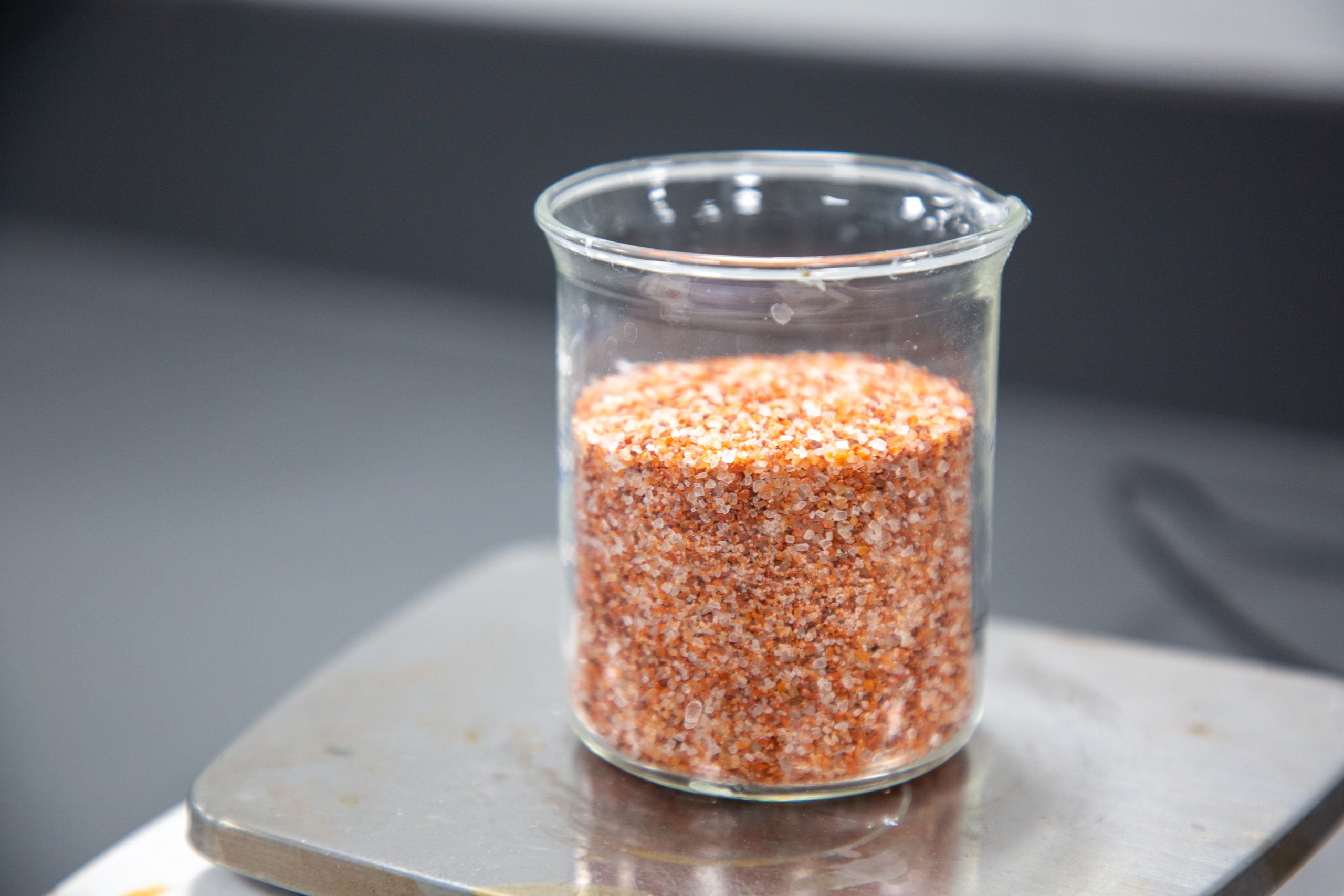By Erin Matthews
The demand for potash is at an all-time high. While potash has some valuable industrial uses, most of the world’s production goes towards supporting the agricultural industry. As demand for a variety of food crops increases, farmers and industry are looking for premium fertilizer to maximize their yields.
As a world leader in potash production, Saskatchewan’s industry is rising to the challenge to meet global needs for 2022 and beyond.
The Saskatchewan Research Council’s (SRC) Mining and Minerals team has supported the industry since its early days in the 1960s. From developing analytical methods for the exploration sector to supporting processing, digital innovation, and emissions reduction, SRC has the expertise to help Saskatchewan’s industry expand potash production worldwide to meet growing demand.
Saskatchewan potash production is in the form of potassium chloride (KCL) and is referred to as muriate of potash (MOP). MOP is the most common potash found in the world and is used to fertilize a wide variety of crops. It provides key nutrients to plants and enriches the soil, helping to satisfy the demand for increased yields of cereal crops, fruits, and vegetables.
While MOP is the most abundant potash in the world, it does have some drawbacks. Its high chloride content can be beneficial for chloride-tolerant plants, but its use can pose a problem for soils that are already high in chloride.
Sulphate of potassium (SOP) is considered a premium fertilizer that can deliver key nutrients to crops.
“SOP is a premium product because it contains potassium and also sulphate,” says Dr. Jack Zhang, associate vice-president of strategic technologies in SRC’s Mining and Minerals Division.
Innovating potash production at home and abroad
“SRC has developed a very broad range of potash-related technologies to produce either MOP, SOP, or even by-products like magnesium chloride and sulphate,” says Dr. Zhang. “We have a wide variety of expertise and knowledge to support potash producers worldwide.”
SRC is working closely with several Australian mining companies to produce SOP from the salt lakes found in the southwest corner of the continent. Unlike traditional potash deposits, these lakes contain a mixture of minerals that can be purified and converted into SOP through a series of chemical processes.
To produce SOP, the brine from the salt lakes is pumped into a series of solar ponds. Renewable energy sources like solar or wind are used in the evaporation process that precipitates certain salts from the brine. This mineral mixture goes through a series of purification stages that are followed by a final conversion stage.
“Once it reaches the desired purity and we add water, we can convert the schoenite to SOP,” says Dr. Zhang. Schoenite is a saline evaporite consisting of a mixed potassium and magnesium sulfate. “The remaining solution is still useful and will recirculate in the pond and in the process to maximize SOP production.”
Strengthening Saskatchewan’s potash industry
With demand for MOP and SOP steadily increasing, Saskatchewan has a lot to offer. Along with conventional and solution mining operations, the province can produce SOP through chemical processes.
SRC has developed different techniques to convert MOP to SOP—processes that enhance natural deposits of potash, helping Saskatchewan maintain a competitive edge in the global market.
By working directly with potash producers in over a dozen countries, SRC is helping to develop premium products, enhance potash recovery, improve mining operations, and anticipate future industry needs.









